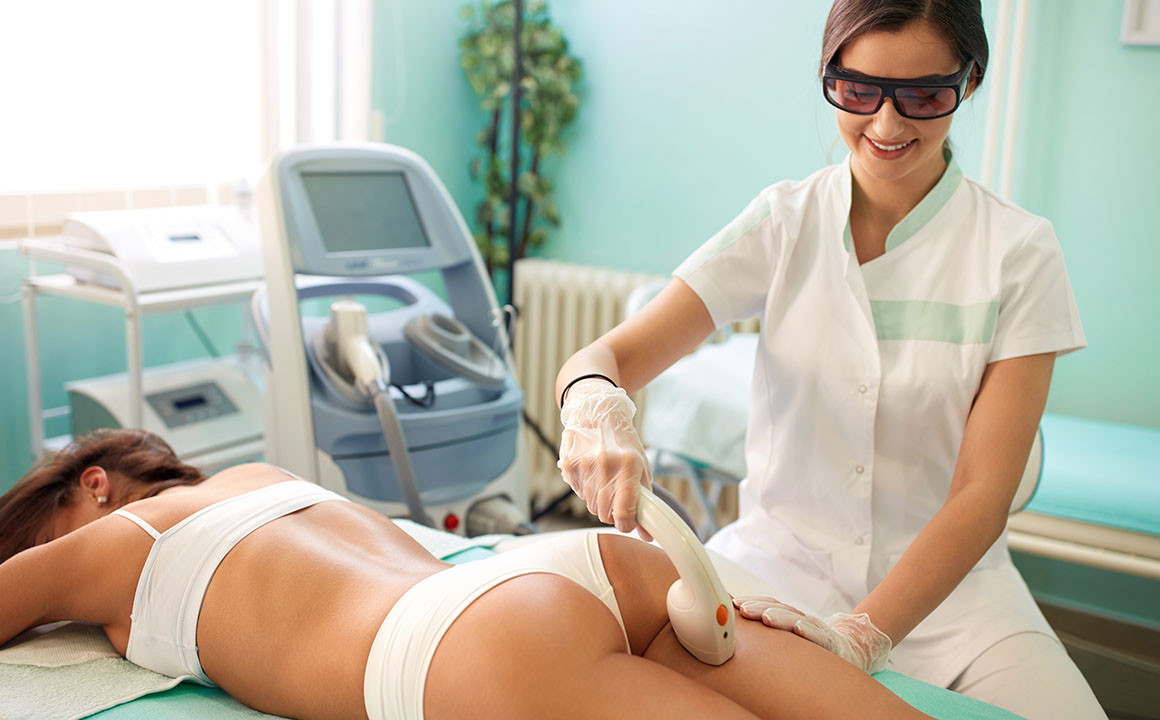Laser Hair Removal: A Great Option to Kiss Ingrown Hairs Goodbye

Are you getting tired of dealing with ingrown hairs? You are not alone in this dilemma because ingrown hairs are common after the puberty stage. They can be found in body areas where coarse hairs usually grow, such as the neck and chin in men and the bikini line in women. They also appear in the armpits, chest area, thighs, arms, and lower legs. Sometimes, ingrown hairs grow in eyelids, but it is not common.
Who develops ingrown hairs?
The majority of people would have ingrown hair, especially teenagers and adult men. Women are also prone to having these unwanted hairs, as well as the African-Americans with thick, coarse, or very curly hairs. Usually, the curly hairs bend back after cutting or shaving and reenter the skin, becoming razor bumps. The little bumps, which are also called pseudofolliculitis, grow back with sharper edges. Studies also reveal that some people with high levels of sex hormones grow more hair than others and get more ingrown hairs.
What causes ingrown hairs?
Ingrown hairs are hairs that grow back into your skin rather than rising up. The main reasons:
- bad shaving habit or improper shaving technique
- negligence to maintain a facial maintenance routine
- dead skin that clogs the hair follicles, forcing the hairs to grow sideways instead of growing up and out
- aggressive or improper hair removal
- friction because of tight clothing
What are the signs that you have ingrown hairs?
As these unwanted hairs grow back, the skin usually reacts as if they are foreign objects and displays the following symptoms:
- skin irritation
- itching
- tenderness
- discomfort
- localised inflammatory reaction that causes raised red bumps or boil-like sores
- small, dry pustules that are signs of folliculitis caused by the skin bacteria like Staphylococcus
What are the possible complications with ingrown hairs?
Some ingrown hairs simply grow back, but some remain inside the skin, which can give you scarring, darkened skin, or worse, an infection. When there is an infection, the bumps tend to have pus inside, causing discomfort. This may necessitate your doctor to make cuts using a scalpel or a sterile needle to release the pus.
Another serious complication of ingrown hairs is the pilonidal cysts that usually grow between the buttocks at the base of the tailbone. These swollen and painful pockets are comprised of hair and skin debris that develop due to infection. To get rid of them, you need a surgical procedure.
Medications may also help to ease the pain caused by ingrown hairs, such as:
- Retin-A or retinoids that can remove the dead skin cells and lessen the changes in the skin pigment
- A topical steroid that can ease the skin irritation and swelling
- Antibiotics (oral or topical) to arrest the infection
How do you kiss goodbye to ingrown hairs?
Here’s how to prevent ingrown hairs in their tracks:
- Exfoliate and cleanse your face well before shaving. Exfoliation can effectively remove dead skin that traps hairs. Gently scrub the area, especially the face, with the right product for your type of skin.
- Use sharp and clean shaving tools. If you use manual razors, always rinse them after every stroke and replace the blades after five uses. For electric shavers, always wash them regularly and replace the components when needed. Remember that sharp blades move over the skin smoothly, preventing ingrown hairs.
- Follow the hair growth direction. A shaving tool with rotary blades will help you follow the hair growth’s direction with ease. If you are using a traditional shaver, make few strokes to get the best results.
- Use the heat. Shave after holding a hot towel over the area or taking a hot shower. The open pores help you make a close shave and prevent skin irritation, hence eliminating ingrown hairs. Another way is to have a warm water shave with a shaving gel or cream.
- Hydrate the face. Applying a moisturiser or an aftershave balm helps prevent ingrown hairs.
When all these practical methods fail to give you the results you want and your ingrown hairs are becoming harder to get rid of, you may consider the laser hair removal procedure.
What makes laser hair removal your best option?
Laser hair removal is a modern and pain-free cosmetic procedure that effectively prevents ingrown hairs. This treatment involves using a gentle laser beam of light to the affected area, resulting in a more permanent outcome of reducing the number of ingrown hairs. The heat generated by the beam is absorbed by the hair melanin. This damages the follicles but keeps the surrounding tissue or skin safe.
The innovation of laser technology also makes this treatment available for all types of skin. It is a safe and quick procedure, which may require an average of 4 to 8 treatments to prevent hair regrowth. While it is generally risk-free, a laser hair removal procedure may cause common side effects like temporary redness, swelling, blistering, and bruising. To ensure more serious complications and side effects like skin discolouration, make sure that you have a licensed, experienced cosmetic specialist to do the procedure.
Share via:





Leave a Comment